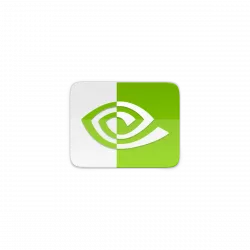For user with NVIDIA graphics card, Ubuntu finally added official NVIDIA 580 driver packages for all current Ubuntu releases.
As you may know, NVIDIA 580 is so far the latest driver series for Linux, that was initially released one month ago. It’s a production branch driver qualified for enterprise and data center GPU use.
The 580 driver features Wayland fifo-v1 protocol support for apps/games running via Vulkan API, reducing visual inconsistencies and potential stuttering.
It enabled RMIntrLockingMode feature by default, which can help reduce stutter especially when using virtual reality (VR). As well, it implemented a feature to reduce time spent in the interrupt top half for low latency display interrupts by deferring the work until later. See HERE for more.
With NVIDIA 580.82.07, it also supports NVIDIA Smooth Motion on GeForce RTX 40 Series GPUs!
Install NVIDIA 580 driver in Ubuntu
Ubuntu made NVIDIA 580 driver (so far 580.95.05) package into the proposed repository for testing few weeks ago. Now, it finally goes official. And, you may install it by following steps.
1. Enable Restricted and Multi-verse repository
The proprietary driver is available through the restricted and multiverse repositories. They are usually enabled by default in Ubuntu desktop.
Just in case, you may launch “Software & Updates” utility to ensure:
Or, run the command below for Ubuntu Server to enable them:
sudo add-apt-repository restricted multiverse
You need to install software-properties-common package if the command does not work.
2. Update your system.
Before installing the driver, it’s better to install all available system updates, especially kernel updates (usually minor version updates), to prevent potential failure.
To do so, either use Software Updater or run the commands below in terminal (Ctrl+Alt+T):
sudo apt update sudo apt upgrade
If there’s a kernel updates, restart computer to boot the new kernel.
3. Install NVIDIA 580 driver
NOTE: The driver version has updated to nvidia 580.95.05. If you can’t wait to get 580.82.07 for NVIDIA Smooth Motion support on RTX 40 series GPUs, or you’re on old Ubuntu 20.04|18.04, then run command below to add the popular “Graphics Drivers” team PPA, which however is not officially supported.
sudo add-apt-repository ppa:graphics-drivers/ppa
For Ubuntu Desktop, you may now launch “Additional Drivers” utility, then select either driver below:
nvidia-driver-580for general desktop and gaming purpose.nvidia-driver-580-serverfor Ubuntu Server or computing purpose.
Then, click “Apply Changes” and restart computer when installation done!
For server without GUI, simply run the commands below one by one to install the driver.
- First, list all available drivers via command:
sudo ubuntu-drivers list
Skip the “udevadm hwdb is deprecated. Use systemd-hwdb instead.” output. It’s a warning that does not matter.
- Then, either install the desktop or gaming use driver via command:
sudo ubuntu-drivers install nvidia:580
Or, install the server or computing purpose driver:
sudo ubuntu-drivers install --gpgpu nvidia:580-server
Finally, restart computer and enjoy!
In addition, for Ubuntu with default GNOME Desktop, it by default fall back to Xorg session, you need to manually switch back Wayland session (if need) from login screen.
For NVIDIA Optimus laptop, it by default runs in hybrid mode. You can right-click on an application or game icon and choose “Launching using Discrete Graphics Card” to start it via NVIDIA GPU while leaving all others handled by integrated GPU.
Or, run command below in terminal to set environment variable, so all apps start from that terminal will be rendering via NVIDIA GPU:
export __NV_PRIME_RENDER_OFFLOAD=1 __GLX_VENDOR_LIBRARY_NAME=nvidia
If you want to run Ubuntu desktop with NVIDIA only mode, then launch “NVIDIA Settings” and navigate to PRIME Profiles page to make a switch.
